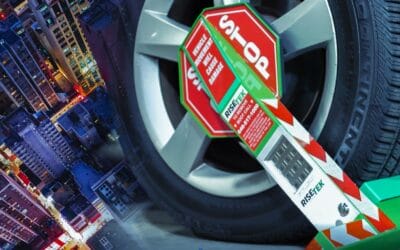Many cities already have booting programs in place that collect thousands of dollars each month in delinquent parking citation revenue. Booting is typically only used for parking scofflaws (repeat offenders who don’t pay parking citations). Most parking programs set generous thresholds for parking scofflaws before they become boot eligible. In most cases, three or more parking citations must be unpaid for more than ninety days for a vehicle to be marked as boot eligible. In most cases, a vehicle owner has received no fewer than five letters in the mail warning them of the consequences of not paying their outstanding parking tickets.
Booting is an effective tool to increase citation collection rates, even if it is not applied to every eligible vehicle. Many parking directors can attest that just the mere presence of a few booted vehicles on the streets will drive more citation payments. A few wise parking directors have even staged a booted vehicle in prominent locations to successfully encourage parking scofflaws to make payments. Some have even gone all-in on the idea and decorated the staged booted vehicle with balloons and signs for maximum effect.
Traditional boots have been an effective tool, but self-releasing boot technology has provided significant advantages. A few drawbacks of traditional car boots are: 1) they are heavy, 2) they take a few minutes to apply, 3) an employee has to remove the boot which dramatically increases labor costs, and 4) it can take hours for the customer to pay and have the boot removed. Most parking enforcement programs are not staffed 24/7, which means booting is only performed during limited time windows, or boots are sometimes removed without payment after a set amount of time.
Customers who have been lucky enough to be booted with a self-releasing device can typically make payment, remove the boot and be on their way in a few minutes. While having your car booted is never going to be an enjoyable experience, lessening your wait time to remove the boot by hours is definitely preferred. Self-releasing boots have immense value in specific areas. They provide a safer process for both customer and employee, reduce the potential for a negative customer-employee confrontation during the boot removal process, and lower the possibility of spreading COVID.
The current labor market resulting from the pandemic also makes self-releasing boots a more attractive option for parking directors. The challenge of finding employees, particularly ones willing to perform boot removal, hinders effective staffing of parking enforcement programs. The dramatic increase in wage rates also tilts the economics of traditional booting programs. If a parking program can save two to six hours of payroll by choosing self-releasing boot technology over traditional boots the math becomes very attractive.
When considering a self-releasing boot company, consideration should be made how the company can further enhance the performance of your enforcement program. Data analytics tools are also available to assist in increasing the effectiveness of your booting program. Software that tracks citation, mobile payment, smart meter, and license plate recognition (LPR) data can help you target and refine your booting efforts to optimize results. In 2019, we were awarded the contract for New York City’s booting program, which boots over 120,000 vehicles yearly, and as a result, they realized a 30% increase in the program performance after employing a company utilizing data analytics.


